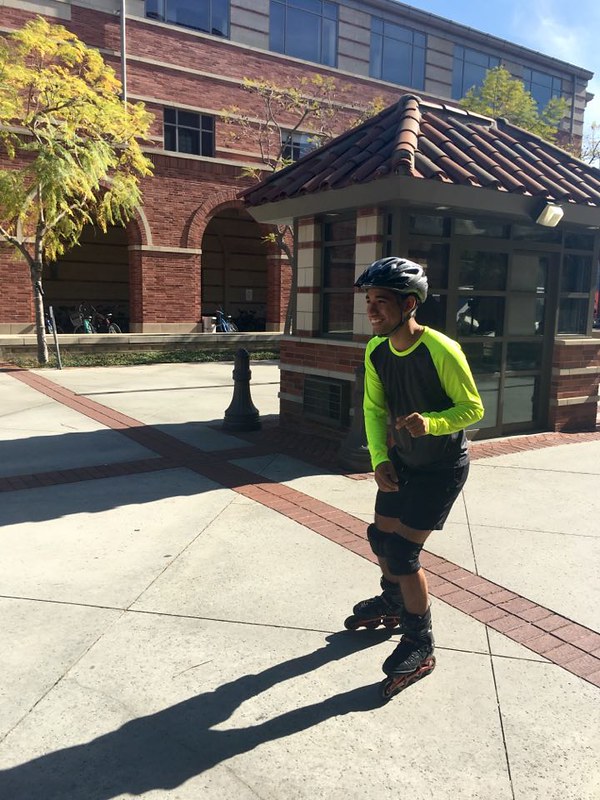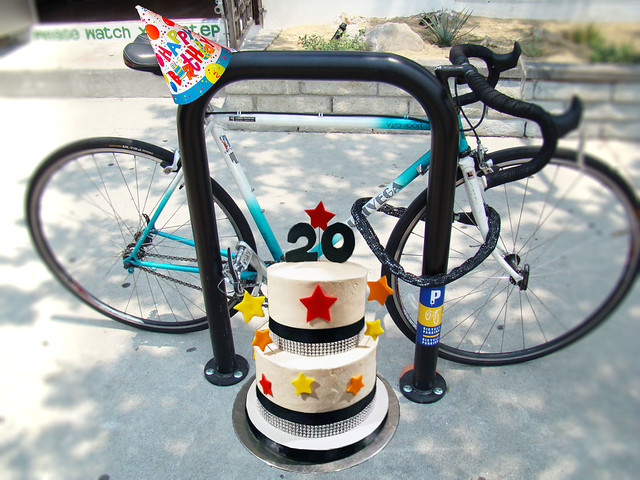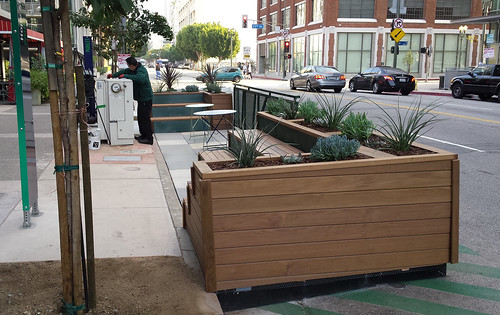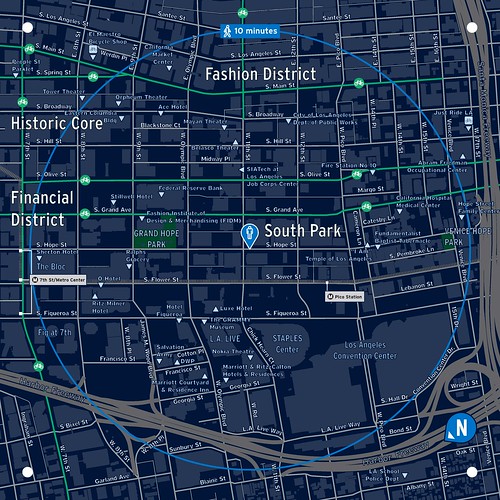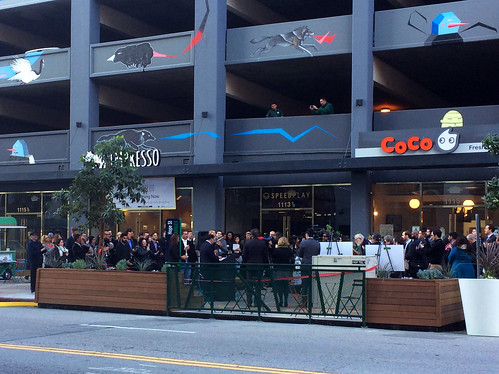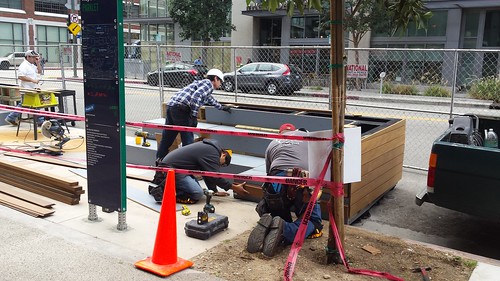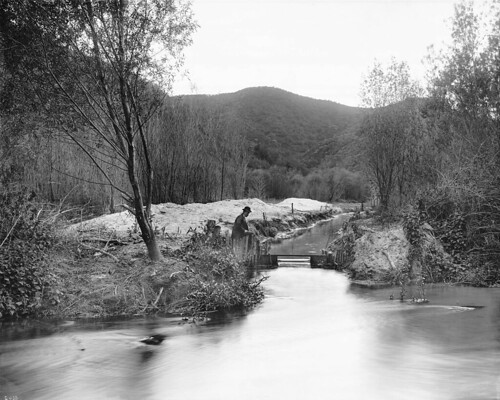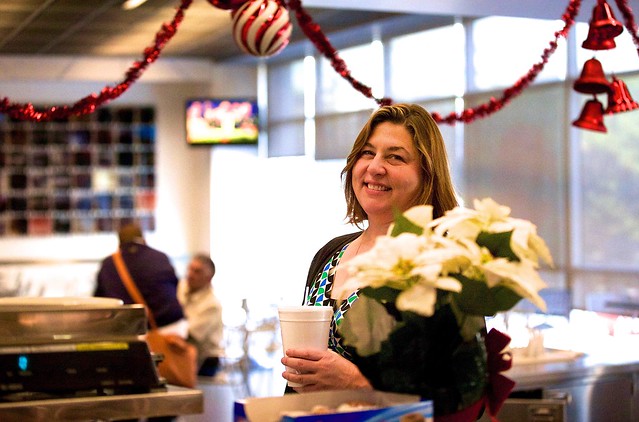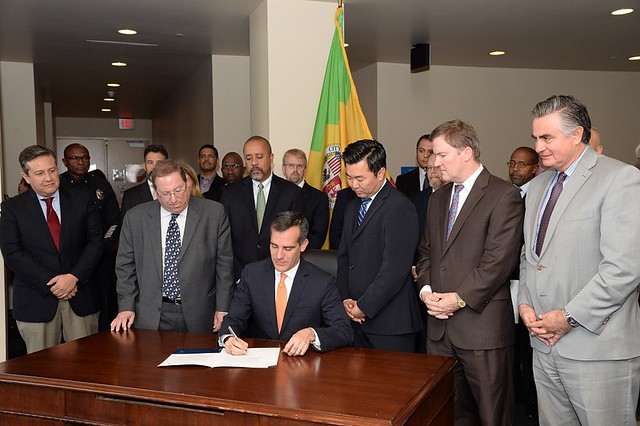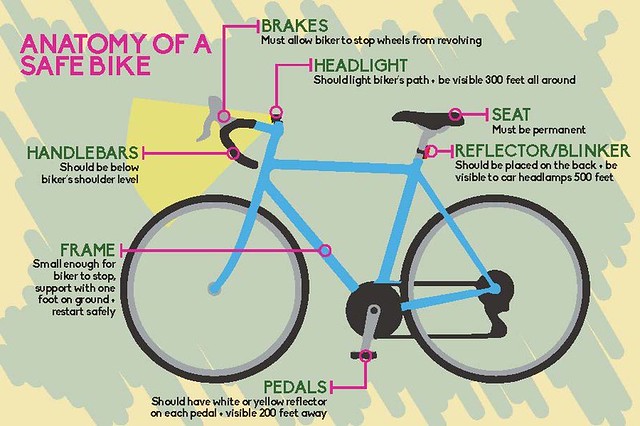This past week I took advantage of the nice weather and borrowed LADOT’s Active Transportation GoPro to film a bike ride from my home in South Pasadena to the Silver Lake Reservoir. I am a graduate student at USC and typically commute to school by transit and on bike. Initially, I wanted to use the GoPro to capture my experience on a new route to USC, but instead I decided to go for a relaxing ride without having to worry about getting to class on time. Doing so let me reflect on the perceived differences between biking in South Pasadena and Los Angeles. South Pasadena is very small, so it’s relatively easy to get anywhere on a bike within a few minutes. Los Angeles, on the other hand, is a lot larger and can seem inhospitable for bicycling. However, if you view each neighborhood as its own self-contained community, riding in the City of Angeles can feel like you are traversing a series of small towns rather than a monolithic sprawling landscape.
My leisurely-paced journey took me through a few LA neighborhoods and along the way I passed by some of my favorite restaurants and cafes. One of the many benefits of biking is being able to stop and walk right into places that seem interesting since parking a bicycle is a lot easier than parking a car. Just lift your bike onto the sidewalk, lock it up to a nearby bike rack, and go. No circling the block for a parking space!
I started my trip at Buster’s Coffee, located on the corner of Mission Street and Meridian Avenue near my apartment in South Pasadena. This neighborhood coffee shop is within walking distance from the South Pasadena Gold Line Station and is a convenient place to meet friends getting off the train. There is plenty of outdoor seating, which is great for people-watching, as well as charming indoor spaces for all your reading/studying needs. For those arriving by bicycle, a hand-painted bike parking sign shows you where you’re welcome to safely lock your bike up towards the rear of the table-strewn alcove next to the shop while you enjoy your meal.
After coffee I walked across the street to the great used book shop, Battery Books and Music, to pick up a new read. On a typical day after getting coffee and perusing books I might go to Mix ‘n Munch, which serves great grilled cheese sandwiches right next door to Battery Books.

Dubbed “the coffee shop by the tracks,” Buster’s Cafe welcomes people arriving by any mode. (Image Source: Leisa Collins Art)
On this relaxed sunny afternoon, however, I went one block south on Meridian Avenue and made a right on El Centro Street, to get to Nicole’s, which offers tasty low-key French fare in a sidewalk cafe setting. The place doubles as a French market so I loaded up my bike’s saddlebags with sandwiches and cheeses, and proceeded to my next destination. After all, you can’t stop at a cheese shop on your way to a meadow and not pack a picnic!
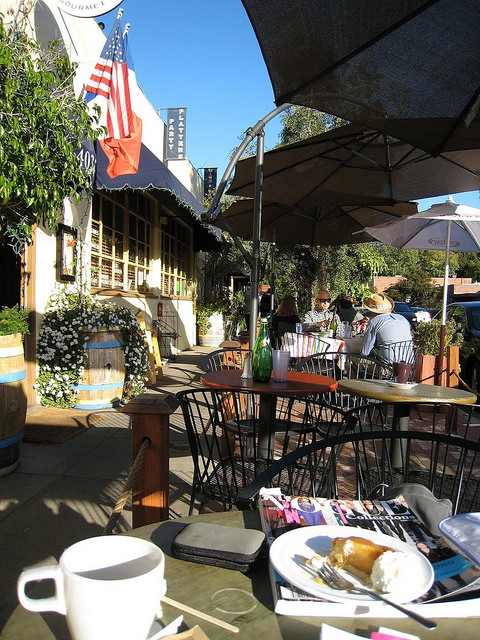
Nothing better than a lazy afternoon at Nicole’s Gourmet Foods. (Image Source: Creative Expressions and More)
After leaving Nicole’s, I pedaled from South Pasadena into the City of Los Angeles by way of the York Boulevard Bridge, which brought me into the Highland Park neighborhood. There are a number of restaurants and shops along York Boulevard easily accessible by bike thanks to the bike lanes. If I did not already have lunch packed away in my panniers, I might have stopped at the Highland Cafe for some chilaquiles. Although I am a few miles from my home at this point in the journey, this translates into a mere 20-something minute bicycle ride, which is enough to get my muscles moving but not so far that it feels like a workout.

People on all sorts of bikes can’t stay away from the good eats at Highland Cafe. (Image Source: Happening in Highland Park)
As I continued west on York Boulevard, I eventually reached Eagle Rock Boulevard where I made a left and continue south. After a short ride down this wide boulevard I find myself in the neighborhood of Glassell Park. I passed by Habitat Coffee, a cafe that recently sprouted up in an otherwise unassuming stretch of Eagle Rock Boulevard. It’s not uncommon to see people enjoying pastries, good conversation, and taking advantage of Habitat’s outdoor dining to enjoy the sunshine.
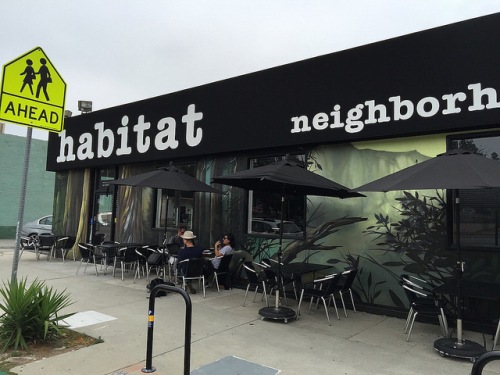
Habitat Coffee’s frontage is accented by our latest sidewalk bike rack design.
(Image Source: L.A.CAFE)
After winding my way through some side streets I reached Fletcher Drive. As with the other streets I used for my trip, Fletcher is its own main street with blossoming businesses. At this point, it was only a 10 minute bicycle ride to the Silver Lake Meadow where I enjoyed my picnic.
To most people, traversing the Los Angeles region by bicycle may seem intimidating. If you watch the video below of my ride, your can judge for yourself how easy it is to get to many local businesses using my bicycle- especially when there are bike lanes available! This trip would undoubtedly be faster by car, there’s no secret there, but when we spend our lives focusing on time saved, we tend to forget about time well spent, and this bike ride was an absolute delight.
This blog post was authored by Paul Cipriani, a Student Volunteer Intern in the LADOT Bicycle Program.
